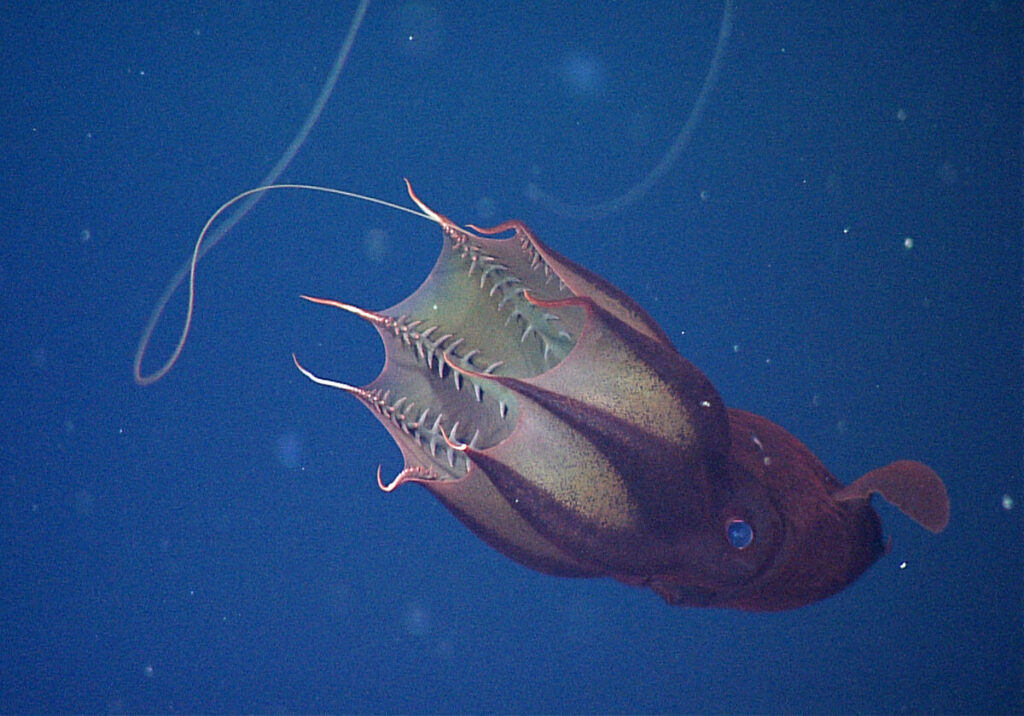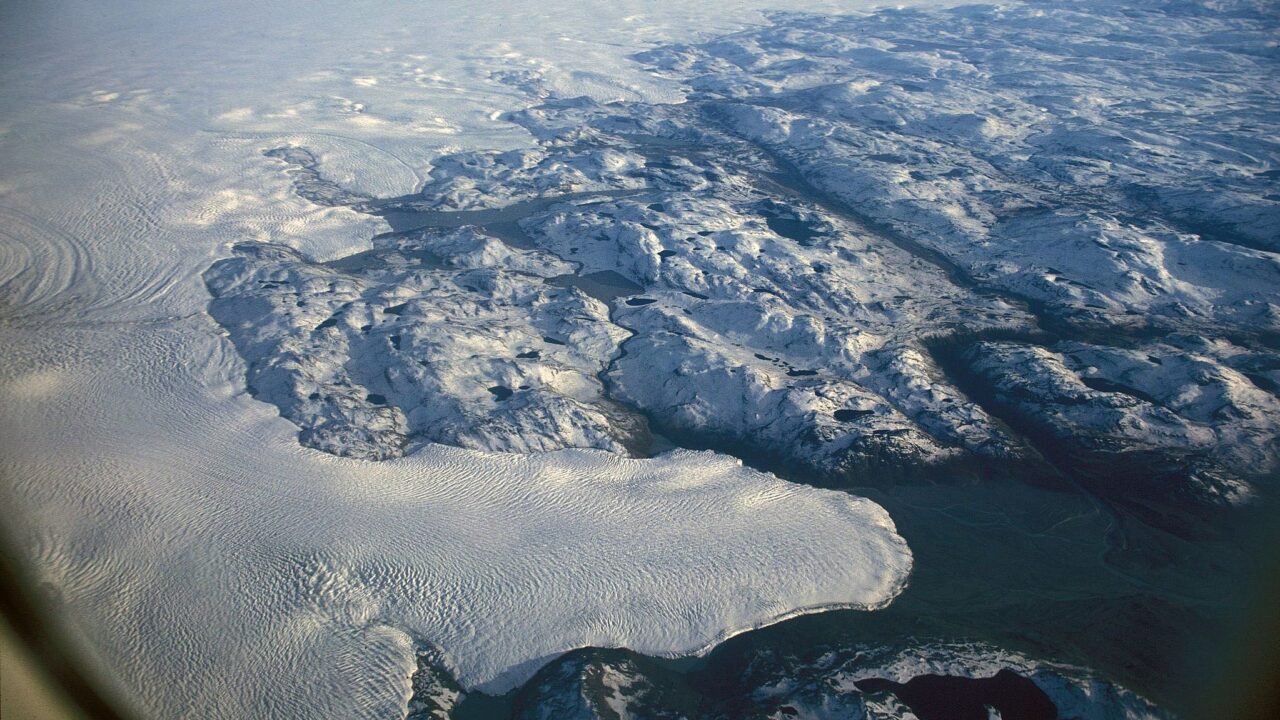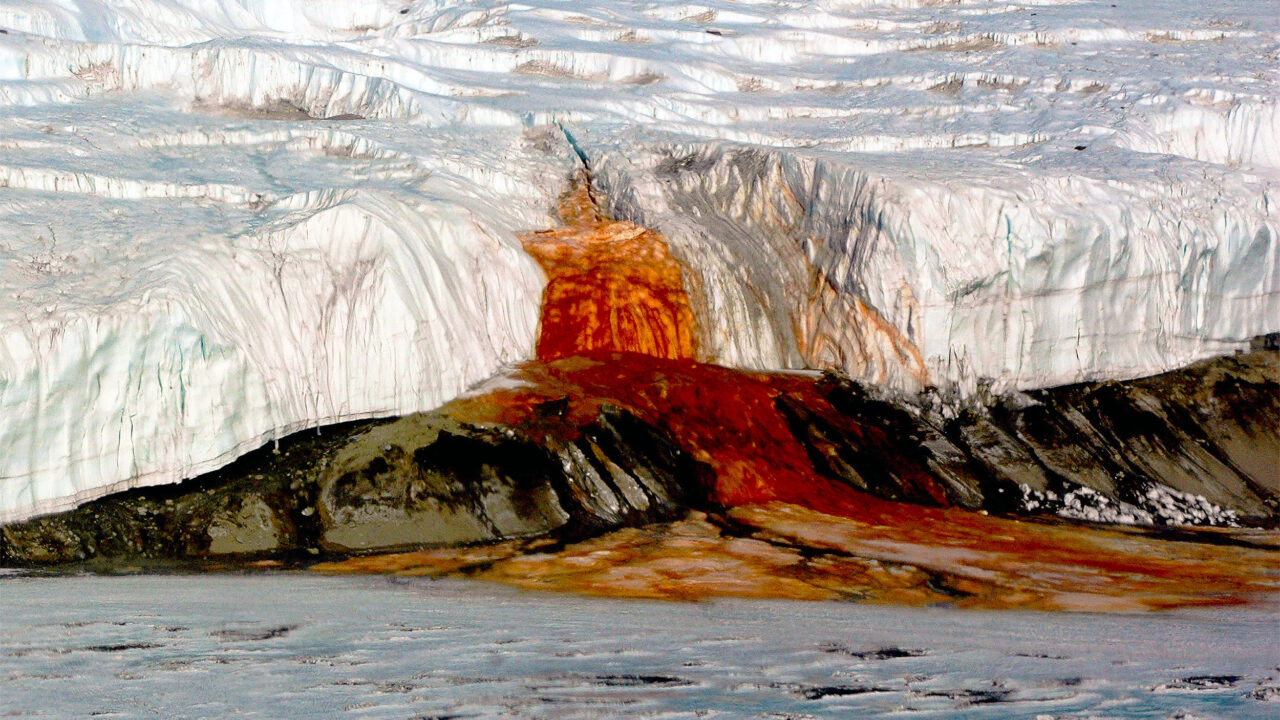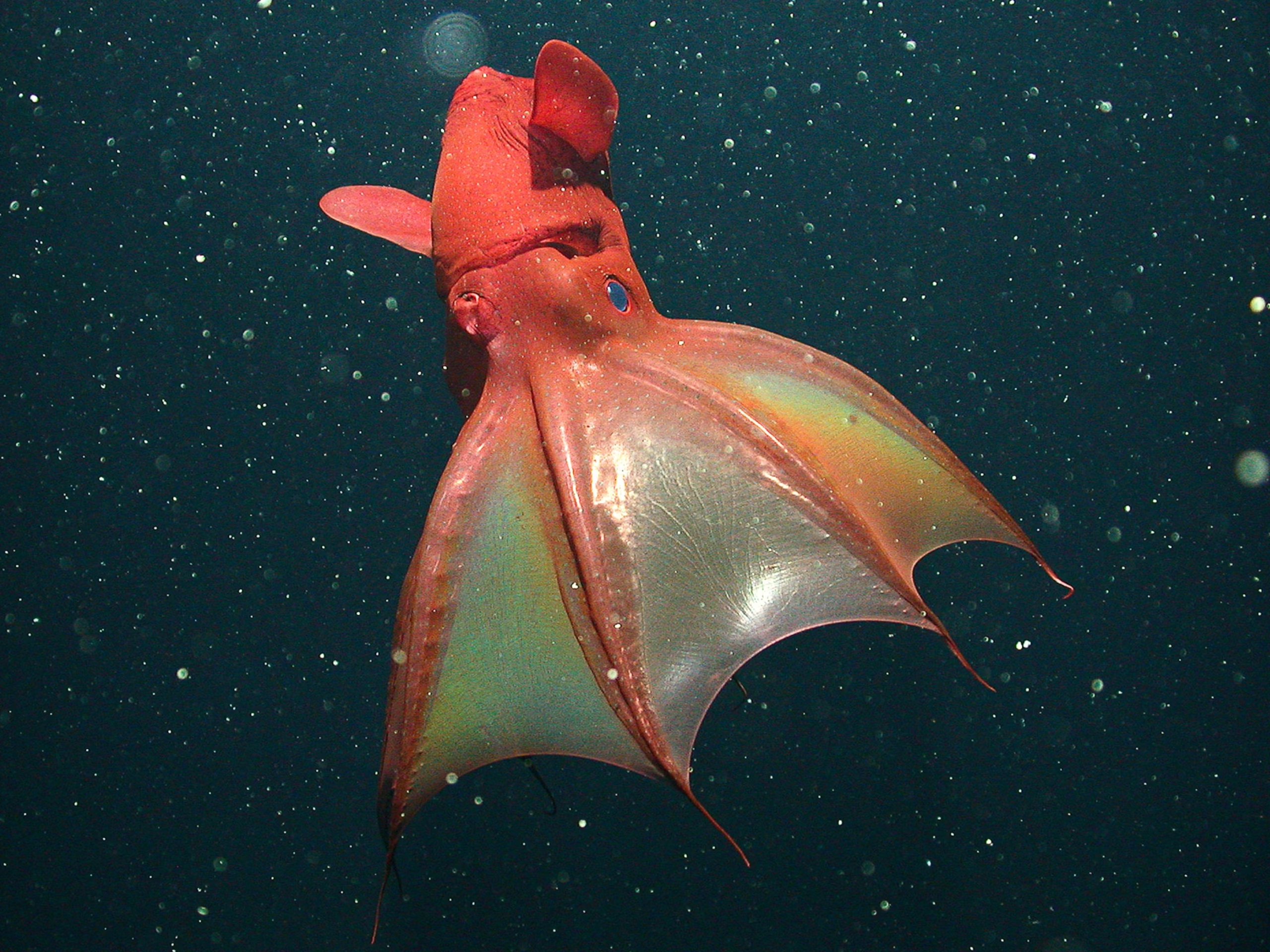1. What Is Vampire Squid?
The Vampire Squid (Vampyroteuthis infernalis) is one of the most fascinating and misunderstood creatures living in the dark depths of the ocean. Despite its eerie name, this animal is neither a true squid nor a vampire. It belongs to its own unique order, Vampyromorphida, making it a living relic of an ancient lineage of cephalopods that dates back more than 30 million years.
2. Appearance and Physical Features
The Vampire Squid’s scientific name translates to “vampire squid from hell,” inspired by its dark, cloak-like body and glowing blue eyes.
It typically grows up to 30 centimeters (about 1 foot) in length and has a soft, gelatinous body perfectly adapted to the crushing pressure of the deep ocean.
Its most distinctive feature is the webbing between its eight arms, which creates a cape-like structure. When threatened, the Vampire Squid can invert this webbing over its body, turning itself inside out to appear larger and more intimidating.
Another remarkable trait is its bioluminescence the ability to produce light through specialized organs called photophores. These glowing lights help the animal startle predators and blend into the faint light of the deep sea.

3. Habitat and Distribution
The Vampire Squid inhabits the oxygen minimum zone depths ranging from 600 to 1,200 meters (2,000 to 4,000 feet) below the ocean’s surface.
In these regions, oxygen levels are so low that most marine life cannot survive. However, the Vampire Squid has developed specialized gills and low metabolic requirements, allowing it to thrive where few others can.
It can be found in the tropical and temperate oceans worldwide, including the Pacific, Atlantic, and Indian Oceans.
ALSO SEE : Hydnora africana: The Bizarre Underground Parasitic Plant That Smells Like Decay
4. Diet and Feeding Behavior
Unlike most squid species that hunt actively, the Vampire Squid feeds passively. It consumes marine snow a mix of dead plankton, fecal pellets, and organic debris that drifts down from the surface.
To gather food, it uses two thin, retractable filaments covered in sensory cells to detect and capture falling particles, which it then wraps in mucus and delivers to its beak-like mouth.
This unique feeding method makes the Vampire Squid one of the few non-predatory cephalopods known to science.
5. Reproduction and Life Cycle
The reproductive habits of the Vampire Squid remain largely mysterious due to the inaccessibility of its habitat.
Females are believed to carry thousands of eggs, which they may spawn over long intervals a trait uncommon among cephalopods.
Another notable difference is that Vampire Squid do not die immediately after reproduction, unlike most of their relatives. This slow, energy-efficient lifestyle suits the low-nutrient conditions of the deep ocean.
6. Adaptations for Survival
Several adaptations allow the Vampire Squid to survive in the deep sea:
- Low metabolic rate, conserving oxygen and energy.
- Light-producing photophores for defense and camouflage.
- Gelatinous body that withstands intense pressure.
- Flexible limbs and webbing for maneuverability in still waters.
These adaptations make it one of the most successful inhabitants of one of Earth’s most extreme environments.
7. Importance and Conservation
Although not currently endangered, the Vampire Squid plays an important ecological role in the deep-sea ecosystem by recycling organic matter.
However, deep-sea mining, pollution, and climate change may threaten its environment in the future.
Studying this enigmatic creature helps scientists understand how life adapts to low-oxygen and high-pressure ecosystems, offering insights into the limits of biology on Earth and potentially other planets.
8. Conclusion
The Vampire Squid is a testament to nature’s ingenuity, perfectly evolved to survive in the darkest parts of the ocean. Far from being a monster, it is a peaceful, energy-efficient survivor that has outlived millions of species through quiet resilience. Its existence reminds us how little we truly know about the vast, mysterious world beneath the sea.
ALSO SEE : Mass Timber Construction: The Sustainable Future of Modern Architecture





